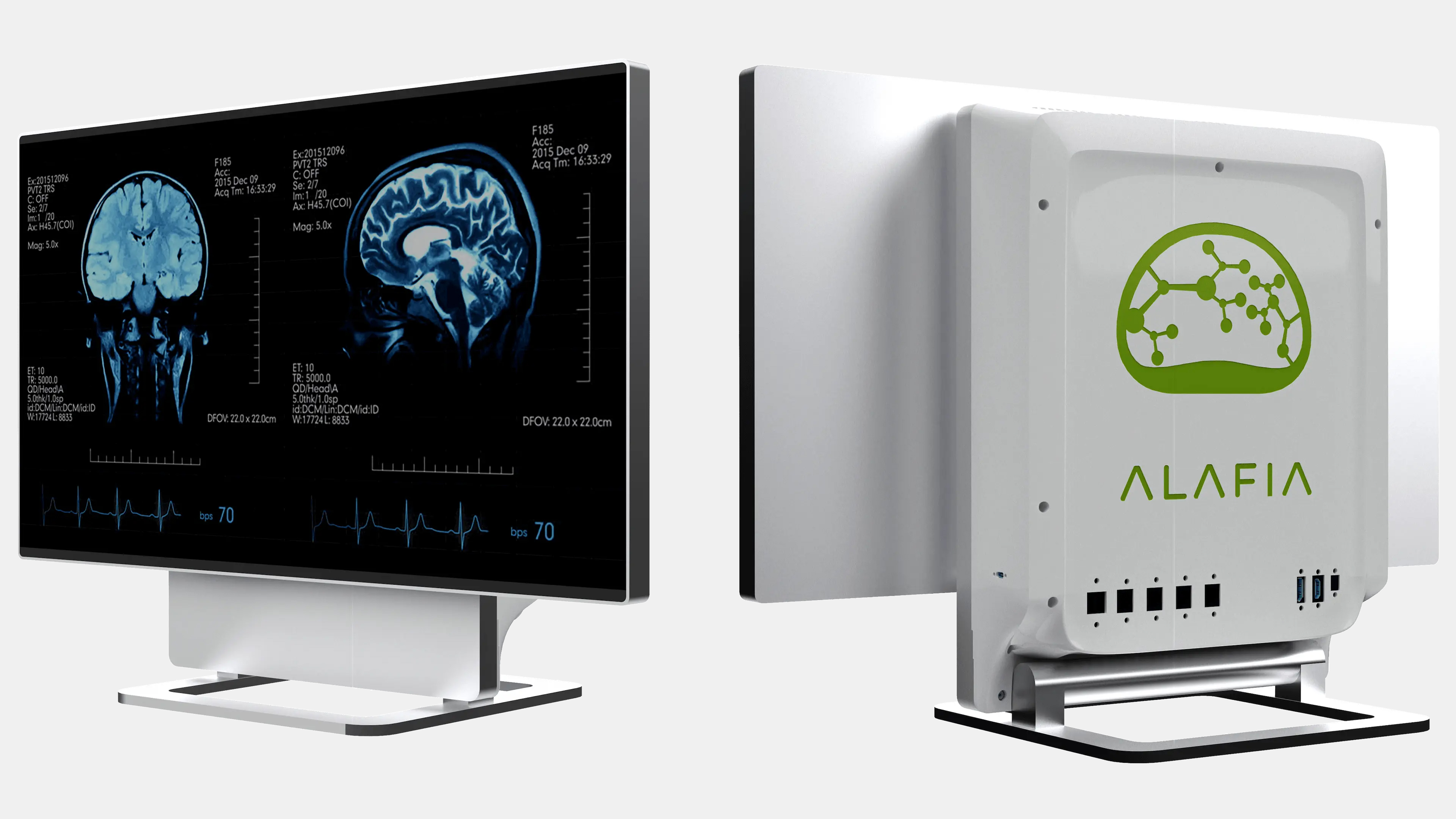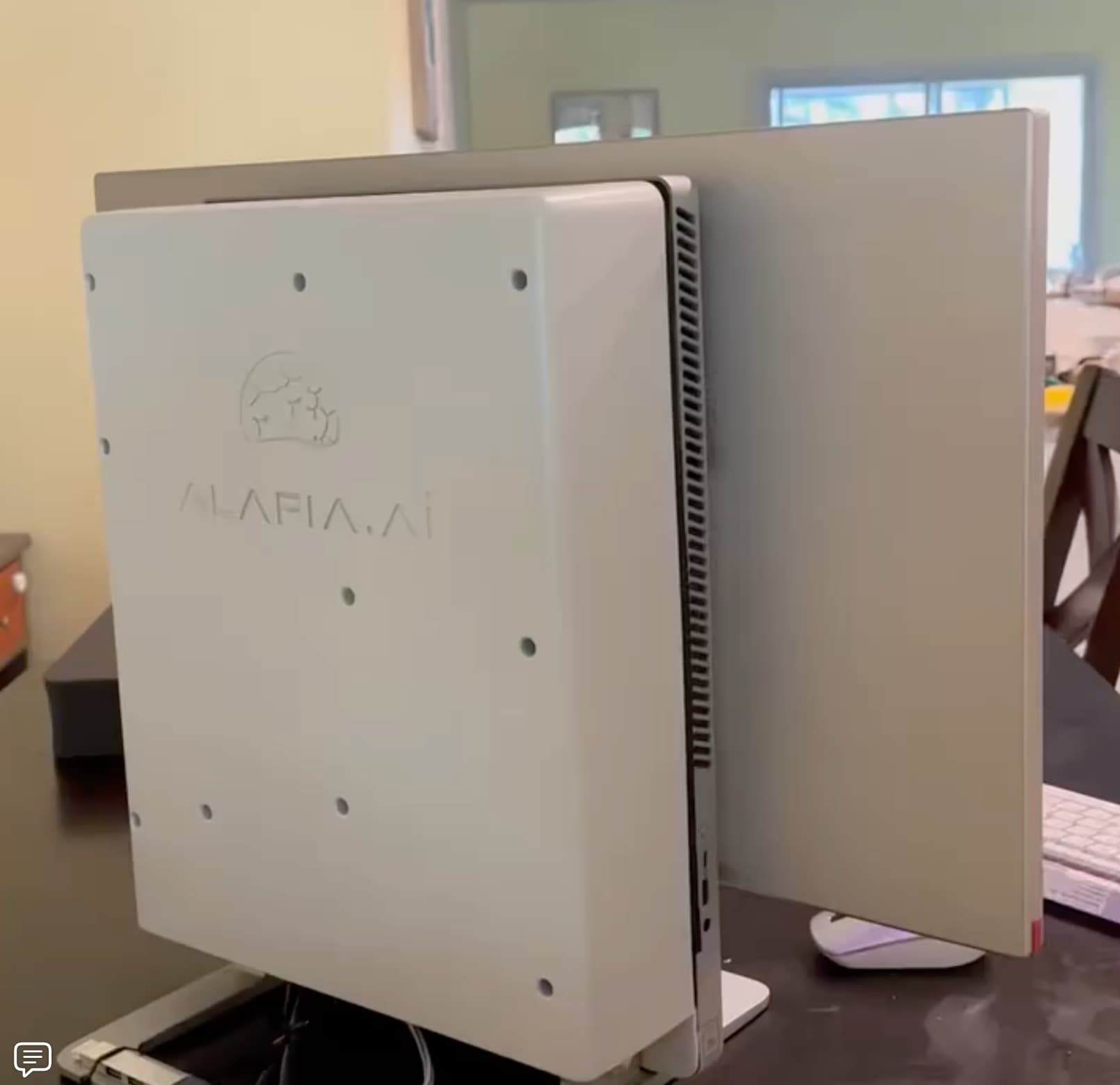AIO workstation has 128 CPU cores and 28,416 GPU cores crammed into surprisingly small form factor
Other specs include 2TB RAM and 8TB SSD

We think all-in-one computers are underperforming brethren of fully-fledged 'classic' desktop workstations. But Alafia AI, a startup specializing in modern media imaging appliances, will prove us wrong. The company's all-in-one Alafia Aivas SuperWorkstation for medical imaging packs a 128-core Ampere Altra processor and two Nvidia RTX professional graphics cards (via Joe Speed).
The machine is indeed quite powerful. Equipped with a 4K touch-sensitive display with up to 360 nits brightness, the workstation packs Ampere's Altra 128-core processor running at 3.0 GHz, two Nvidia RTX graphics cards with up to 28,416 cores (though the configuration shows Nvidia's RTX 4000 and RTX A3000 graphics cards), 2TB of DDR4 memory, and an up to 8TB solid-state drive.
"Alafia Ai is making 128 core medical imaging AI developer workstations with 4K rotating display, Ampere Altra Dev Kit 128c 7 built-in," wrote Joe Speed, the head of Ampere's edge computing division. "When asked 'Why Ampere,' Alafia said medical imaging tools are CPU intensive, and clinicians will run many apps at the same time."



Alafia AI calls its system a purpose-built clinical research appliance, to a large degree, because not many applications support both Arm-based Ampere Altra processors and Nvidia's inference capabilities. The company aims to ship the hardware in Q2 2024, expects massively parallel compute application integration in the third quarter, and then projects ecosystem device integration in Q4 2024.
For now, the machine is mainly aimed at software developers. Still, institutions that can tailor their applications for the Arm CPU architecture can buy and deploy them if they find performance and capabilities suitable for their needs. Alafia AI has a Github site that links to programs on its platforms. Meanwhile, the company clearly states that those who deploy the workstations in the field are responsible for the results that they produce.
"You are responsible for instituting human review as part of any use of Alafia Ai, Inc. products or services, including in association with any third-party product intended to inform clinical decision-making," a statement on the Alafia AI website reads. "The Alafia Ai, Inc. workstation, servers and/or products and services should only be used in patient care or clinical scenarios after review by trained medical professionals applying sound medical judgment."
Get Tom's Hardware's best news and in-depth reviews, straight to your inbox.

Anton Shilov is a contributing writer at Tom’s Hardware. Over the past couple of decades, he has covered everything from CPUs and GPUs to supercomputers and from modern process technologies and latest fab tools to high-tech industry trends.
-
jlake3 ...but why?Reply
I don't work in the medical field and am I'm not up on all the requirements of medical imaging, but this seems like a mashup of hot tech buzzwords in search of a problem. AI! ARM! 4K!
Is it for development of medical software? If so, then what exactly is the benefit of making it an all-in-one?
Or is it for deploying into a clinic, where space might be limited? If that's the case, then can anything actually use all that compute power? Does the current workflow run on ARM? Does it have the ports and software support to interface with existing imaging machines? My impression as a patient is that imaging machines come with their own specialized control and processing systems, then a pretty average Windows workstation is used for review and sharing of results. Which rather than running "many apps at the same time," tends to just be running the viewer app for the results at hand, a really dated looking frontend to their patient record database, a calendar, and maybe an in-office messaging program.
And maybe you could have a fully-local AI that checks scans and flags areas for further review by a human operator or closer-up scanning, which reduces the issues of sending that data out to someone else's data center... but their ending disclaimer makes it sound like rather than this being the appliance to run something they've cooked up, they're just chucking hardware out there on the assumption that the software will be built. -
ivan_vy Reply
looks like a solution looking for a problem, it has no place in the doctor's room and is a burden or risk to have a full system instead of a server backed compute and storage.jlake3 said:...but why?
I don't work in the medical field and am I'm not up on all the requirements of medical imaging, but this seems like a mashup of hot tech buzzwords in search of a problem. AI! ARM! 4K!
Is it for development of medical software? If so, then what exactly is the benefit of making it an all-in-one?
Or is it for deploying into a clinic, where space might be limited? If that's the case, then can anything actually use all that compute power? Does the current workflow run on ARM? Does it have the ports and software support to interface with existing imaging machines? My impression as a patient is that imaging machines come with their own specialized control and processing systems, then a pretty average Windows workstation is used for review and sharing of results. Which rather than running "many apps at the same time," tends to just be running the viewer app for the results at hand, a really dated looking frontend to their patient record database, a calendar, and maybe an in-office messaging program.
And maybe you could have a fully-local AI that checks scans and flags areas for further review by a human operator or closer-up scanning, which reduces the issues of sending that data out to someone else's data center... but their ending disclaimer makes it sound like rather than this being the appliance to run something they've cooked up, they're just chucking hardware out there on the assumption that the software will be built.
maybe USA hospitals have a lot of cash to burn to give one of these to every doctor. -
Wimpers Reply
I've worked in a hospital as an IT guy for 4 years and as far as I know, medial images don't need a lot of processing power.jlake3 said:I don't work in the medical field and am I'm not up on all the requirements of medical imaging, but this seems like a mashup of hot tech buzzwords in search of a problem. AI! ARM! 4K!
They even have their own standard, PACS, but this only used for storage and distribution of the images.
Fujitsu Siemens makes the hardware and HP Z-series workstations (but those were kinda overkill as they just ran 1 program) were used by the doctors in combination with EIZO 10-bit monochrome high-contrast greyscale monitors, like this one.
Interpretation of the images was always done by a human and normally always double-checked by another specialist.
Maybe AI could be used for preliminary diagnostics or pointing out interesting/alarming areas to the operators, but that's about all, no need for a supercomputer.